Significance
Lugang Mazu Temple is a national historic landmark with over four hundred years of rich history. It is one of the oldest Mazu temples in Taiwan and the first to enshrine one of the six inaugural Mazu statues (kāijīmā, the original Mazu statue of a temple, installed during its inaugural ceremony) of Meizhou Mazu Temple, the first Mazu temple in the world. Lugang Mazu Temple’s construction and ornamentation—including woodwork, stone sculptures, and paintings—were carried out by celebrated artists. The temple’s Sanchuan (Front) Hall contains some of the most extraordinary artwork found in the temple. All of the hall’s stone sculptures, floral carvings, and paintings were created by renowned masters. The hall also preserves some extremely rare antiques that can be found nowhere else, from plaques with inscriptions by Chinese Qing emperors, officials, and military officers, to Taoist talismans and a seal of Mazu from Meizhou Temple. Since Meizhou Mazu Temple was destroyed during the Cultural Revolution, the Lugang temple’s Mazu statue and the thousands of antiques it preserves have become even more precious and historically significant.
History
Although now officially titled Lugang Mazu Temple, the temple actually goes by several names. It was formerly known as Lugang Tianfei (Heavenly Queen) Temple and also once called Luxi Shengmu (Holy Mother) Temple. It is often referred to by local residents as just the Mazu Temple or Jiuzu (Old Mazu) Temple. The temple was first constructed in the 1600s, at a location slightly north of its current site. For over four hundred years, this Mazu temple safeguarded local residents emigrating from southern China (the Minnan area). In 1683, Shi Lang (1621 – 1696), the commander-in-chief of the Chinese fleet during the Qing dynasty, brought one of the six inaugural Mazu (Patroness of the Sea) statues from Meizhou Mazu Temple with him for protection during his invasion of Taiwan. The statue was later given the title Heavenly Queen (tiānfēi) for her contribution to military victory. Shi Lang also donated a plaque with the inscription “My Benevolent Queen” in gratitude for Mazu’s blessings. The Mazu statue was then housed in Lukang, a prosperous commercial center at the time. In 1725, the temple was relocated by Shi Shi-bang (1671 – 1743), a cousin of Shi Lang, to its current location. The temple underwent several renovations during the 19th and early 20th centuries. The structure of the temple complex follows the Diantang style, an architectural design with steeper roof slope that is typically adopted by palace buildings or official residence. The Sanchuan Hall was renovated in 1933 by Wang Shu-fa, the nephew of famous master carpenter Ong Ek-sun (1861 – 1931) of Quanzhou, China. Lukang Mazu Temple was designated a National Historic Landmark in 1985.
Special Features
1The Sanchuan HallLugang Mazu Temple’s Sanchuan hall is five kaijian wide and four jinshen deep (kaijian and jinshen are traditional Chinese architectural units denoting the openings between the pillars and the depth of the building) with a double-eaved hip-and-gable roof—a rare choice for the front hall of a temple. Two octagonal moon gates flank the main entrance. The entrance itself contains three doorways, and the whole is recessed to form a shallow alcove or entryway. Such a design, called āoshòu, is typically employed in Chinese temples to create more depth and dimension in a building. The dougong (interlocking wooden brackets) supporting the front eaves not only incorporate the usual vertical and horizontal brackets, but also oblique ones. This is known as a mesh dougong (wǎngmù dòugǒng) or lucky dougong (rúyì dòugǒng), and was a popular choice among craftsmen of the Xidi style of carpentry, which had its origins in mainland China’s Quanzhou City.
2The Octagonal Caisson Ceiling (bāguà zǎojǐng) The octagonal caisson ceiling inside the Sanchuan Hall is the work of carpentry master Wang Shu-fa (1861 – 1931). The ceiling can be divided into two main sections. In the lower section of the octagon, there are two wooden brackets (gong) per side along with a bracket at each angle, for a total of twenty-four brackets. Each supports a succession of four more brackets (dou) which extend both upward and inward. For the upper section, each side of the octagon is reduced to one bracket, each supporting a series of three more brackets. The completed design forms the shape of an upturned bowl and reaches a peak at the center of the ceiling, commonly called dǐngxīn míngjìng, literally “the central mirror” to symbolize the water trigram of Bagua—another aspect unique to the Xidi school of carpentry. Small figurines of the Eight Immortals can be found at each angle of the octagon. On top of these is another round of decorations inspired by the Four Passions (lotus, goose, chrysanthemum, and plum) and the Four Professions (fishing, woodcutting, farming, and studying). These works were the result of a joint effort by masters Ong Ek-sun and Wang Shu-fa. Although the design of Lugang Mazu Temple’s caisson ceiling is similar to that of the ones found in Hsinchu City God temple and Changhwa Nanyao Temple, it is the most beautifully ornamented of all.
The octagonal caisson ceiling inside the Sanchuan Hall is the work of carpentry master Wang Shu-fa (1861 – 1931). The ceiling can be divided into two main sections. In the lower section of the octagon, there are two wooden brackets (gong) per side along with a bracket at each angle, for a total of twenty-four brackets. Each supports a succession of four more brackets (dou) which extend both upward and inward. For the upper section, each side of the octagon is reduced to one bracket, each supporting a series of three more brackets. The completed design forms the shape of an upturned bowl and reaches a peak at the center of the ceiling, commonly called dǐngxīn míngjìng, literally “the central mirror” to symbolize the water trigram of Bagua—another aspect unique to the Xidi school of carpentry. Small figurines of the Eight Immortals can be found at each angle of the octagon. On top of these is another round of decorations inspired by the Four Passions (lotus, goose, chrysanthemum, and plum) and the Four Professions (fishing, woodcutting, farming, and studying). These works were the result of a joint effort by masters Ong Ek-sun and Wang Shu-fa. Although the design of Lugang Mazu Temple’s caisson ceiling is similar to that of the ones found in Hsinchu City God temple and Changhwa Nanyao Temple, it is the most beautifully ornamented of all.
3Meizhou Mazu Temple’s Inaugural Mazu StatueKāijīmā is the term for an original Mazu statue commissioned for and enshrined during the inaugural ceremony of the Meizhou Mazu Temple, thought to be the first Mazu Temple in the world. This temple had six Mazu statues when it was first constructed. The one now situated in Lugang Mazu Temple came to Taiwan with Shi Lang’s invasion fleet. It is about sixty centimeters tall, holds a ceremonial scepter, and is plainly dressed. The sculpture’s elegantly carved clothing reflects the style of carpenters from mainland China’s Quanzhou City. The face of the statue was originally pink. However, over the course of time, it has constantly been wreathed in incense smoke, resulting in the blackened face that we see today. Thus, one of its many sobriquets is Smoke Mazu (xiāngyānmā). Of the six original Mazu statues of Meizhou Temple, this is the only one that remains. The other five were all lost during upheavals such as China’s Cultural Revolution. The statue is normally kept in an inner sanctum and only brought out for public worship from 11:00 p.m. on New Year’s Eve of the lunar calendar to the 23rd day of the third lunar month, which is Mazu’s birthday.
4Sculptures of Qianliyan and ShunfengerThe temple contains two pairs of sculptures depicting Mazu’s fierce warrior guardians, Qianliyan and Shunfenger. One pair flanks the shrine in the main hall and the other stands on either side of the arched door at the front of the temple. Their names translate to Thousand-Mile Eyes and Follow-Wind Ears. They are spoken of in many Chinese legends as generals, guardians, or monsters who have the power to see and hear everything. These works are believed to have been creations of Quanzhou sculptor Lian Yong-chuan. Qianliyan holds a Chinese polearm (jǐ) while Shunfenger wields an axe. The sculptures, with their graceful yet awe-inspiring stances and expressions, are classic depictions of these two deities.
5Openwork Stone Sculptures in Sanchuan Hall Most of the stone sculptures found in Lugang Mazu Temple are cut from Quanzhou bluestone. They are carved using a variety of techniques including openwork, relief-carving, flat-carving, and freestanding. The reliefs of stone dragons and tigers on the windows of the Sanchuan Hall are particularly impressive. They were made by Jiang Wen-hua and Jiang Wen-shui, both relatives of renowned sculptor Jiang Xin (1873 – 1933).
Most of the stone sculptures found in Lugang Mazu Temple are cut from Quanzhou bluestone. They are carved using a variety of techniques including openwork, relief-carving, flat-carving, and freestanding. The reliefs of stone dragons and tigers on the windows of the Sanchuan Hall are particularly impressive. They were made by Jiang Wen-hua and Jiang Wen-shui, both relatives of renowned sculptor Jiang Xin (1873 – 1933).
6The Toad Sculptures above the Plaque A plaque inscribed with the phrase “Protected by Mazu” (báohǎi méngxiū) hangs at the edge of the octagonal caisson ceiling in the Sanchuan Hall. It refers to Mazu’s protection of Shi Lang when his fleet traveled across the Taiwan Strait. A pair of toads sculpted in wood by master woodworker Shi Li (1903 – 1984) sits atop the plaque. “Toad Palace” is a poetic euphemism for the moon in Chinese; the term owes its origins to one of the Monkey King tales. In China, passing the Civil Service exams was known as entering the toad palace and so toads became seen good luck symbols and were often used in temple decoration. Each of the toads in Lugang Mazu Temple holds a flower in its mouth. One holds a chrysanthemum—a symbol of longevity—and the other a camellia because it blooms year-round.
A plaque inscribed with the phrase “Protected by Mazu” (báohǎi méngxiū) hangs at the edge of the octagonal caisson ceiling in the Sanchuan Hall. It refers to Mazu’s protection of Shi Lang when his fleet traveled across the Taiwan Strait. A pair of toads sculpted in wood by master woodworker Shi Li (1903 – 1984) sits atop the plaque. “Toad Palace” is a poetic euphemism for the moon in Chinese; the term owes its origins to one of the Monkey King tales. In China, passing the Civil Service exams was known as entering the toad palace and so toads became seen good luck symbols and were often used in temple decoration. Each of the toads in Lugang Mazu Temple holds a flower in its mouth. One holds a chrysanthemum—a symbol of longevity—and the other a camellia because it blooms year-round.
7Lingxiao Hall Lingxiao Hall is also called Tiangong (Heavenly Lord) Hall. It was built in 1963 by Shi Kun-yu (1919 – 2010). With the exception of the dragon columns, the stone sculptures in the rear hall were all created by a team of sculptors led by Zhang Qing-yu, grandson of Jiang Xin. The craftsmanship of the dragon sculptures is especially vivid and captivating.
Lingxiao Hall is also called Tiangong (Heavenly Lord) Hall. It was built in 1963 by Shi Kun-yu (1919 – 2010). With the exception of the dragon columns, the stone sculptures in the rear hall were all created by a team of sculptors led by Zhang Qing-yu, grandson of Jiang Xin. The craftsmanship of the dragon sculptures is especially vivid and captivating.
Reminders
Lugang Mazu Temple is open from 6:00 a.m. to 10:00 p.m. The two most significant occasions at the temple are Mazu’s birthday on the 23rd day of the third lunar month and the Day of Mazu’s Ascension on the 9th day of the ninth lunar month.
Panoramic
Directions